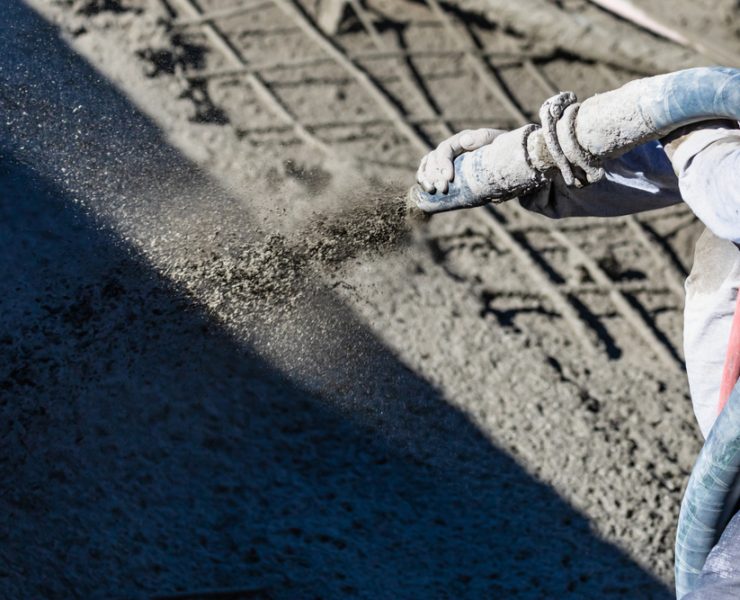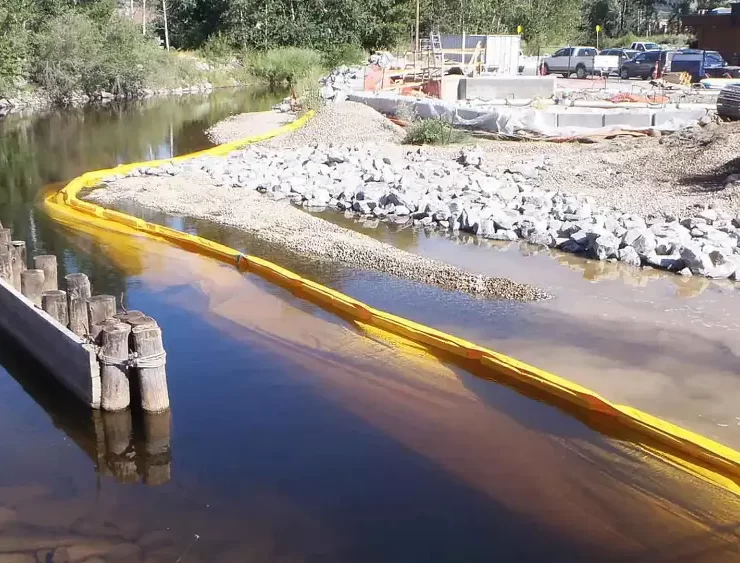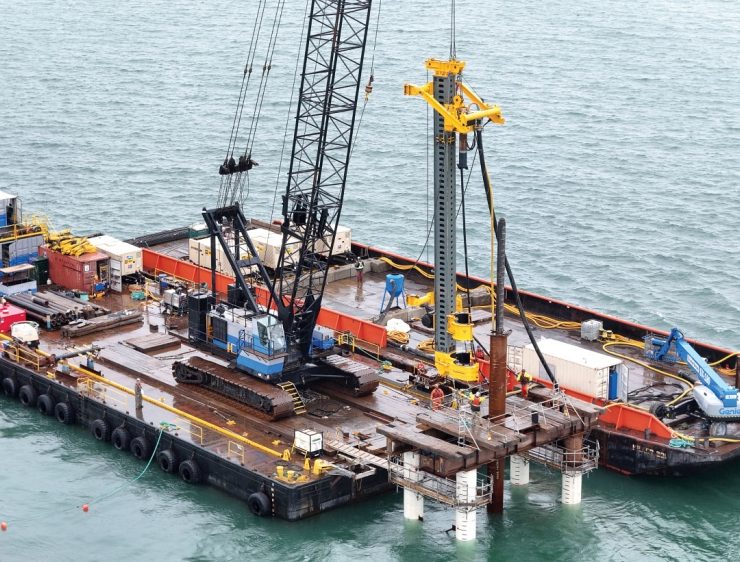Basics of Coastal Engineering


Coastal engineering is a highly specialized type of engineering that is designed to address both natural and man-made changes in coastal zones.
A well-considered coastal engineering solution can provide the structural and non-structural protection against coastal changes, and can maximize beneficial effects while minimizing adverse impacts of potential solutions to problematic areas on a coast line.
Coastal engineering involves an application of both physical science and engineering, and requires a thorough understanding of the area in question to fully understand the nature and complexity of the problem at hand.
In the United States, there are over 84,240 miles of coastline, with approximately 41 percent of that coastline exposed to the open ocean, and the remainder sheltered by bays, estuaries and lagoons.
The vast coastlines of the U.S. vary considerably in characteristics, with rocky shorelines in New England, marshes in the Middle-Atlantic region, coastal cliffs in California, and post-volcanic activity in the north Pacific and Alaska.
The wide variation in the types of American coastlines demonstrates the need for an in-depth study before undertaking a coastal engineering project.
However, over time, man-made development along beaches and coastlines has damaged many of these natural protections against erosion.
In addition, the use of waterways for transportation purposes has diverted the natural flow of water that can accelerate the rate of erosion. The potential loss of land due to erosion from storms, waves and currents can cause significant monetary loss to property owners and investors.
A coastal engineer can often develop solutions to help prevent or reduce the risk of erosion in these areas. To do so, an engineer must understand not only basic engineering principles, but the natural forces causing the erosion in the first place.
A coastal engineering project unfolds in three phases.
First, an engineer must perform a study to understand the physical system at play on the coastline, and the shoreline’s response to these forces.
Second, the engineer must design coastal works to meet the project’s objectives that are within the bounds of acceptable coastal impact.
Third, the engineer must oversee the construction of the coastal works and monitor their performance to ensure proper performance.
This article will discuss the first two phases: studying the coastline and examining options for coastal works projects.

Phase One: Studying the Coastline
Before any work can begin on a coastal engineering project, the engineer must first undertake a comprehensive study of the coastline involved to fully understand the dynamics of the elements involved.
Coastal projects are unique in that they involve the intersection of air, land, and water, with conditions that frequently change. An engineer must observe each element, including the ocean and the beach, as well as how the beach responds to various events, such as storms, to gain an understanding of how to design the coastal works project.
As an initial matter, the engineer should research the range of tides for the specific geographic location. This information can help an engineer understand the level at which waves will hit the beach.
Similarly, current and surge information can inform how water piles up against land or how water will surge during a storm.
Next, engineers should examine the beach itself to determine the type of sediment present and the slope of the beach. These factors are an important consideration in the construction of a coastal works project.
As a general rule, larger sand particles tend to be found on steeper beaches, while gently sloping beaches tend to have finer grains of sand.
Engineers should also take into consideration the various natural protections that a coastal area may have.
Barrier islands are an important form of physical protection for certain coastlines, particularly along the Atlantic coast south of Long Island. In theory, these islands protect the mainland from waves; however, many have been so highly developed that their own coasts may need protection as well.
Lagoons are shallow bodies of water that separate a barrier beach from the mainland. Lagoons are connected to the ocean by an inlet.
These inlets can provide navigation passage to the sea and can permit beach material removed by storms to be carried back out to sea. Changing conditions can result in certain inlets to close while new inlets open.
Through research, engineers will note the historic response of beaches to changing conditions. Coastlines have two primary dynamic responses to the sea: a response to normal conditions and a response to storm conditions.
However, during storms, the massive wave energy often requires beaches to sacrifice large amounts of coastline. This may result in a permanent loss of land.
During storms, strong winds generate high, steep waves, and may lead to storm surges that allow waves to hit parts of the beach that are normally not exposed to the water.
These waves then are able to erode the beach, berm, and sometimes dunes, carrying off material to the nearshore bottom until it forms an offshore bar. This bar will then serve to break the waves further offshore, ultimately protecting the beach.
In severe storms, such as hurricanes, it is not unusual for high water levels from storm surges to erode all or part of a dune within hours. The beach essentially sacrifices part of the beach and dune to build an offshore bar, preventing further erosion.
Over time, the beach that was eroded by a storm may be returned to it by the waves. However, the loss of land may be permanent, especially if the storm was particularly violent or the erosion was significant.
Engineers must also account for what is known as longshore transport of sand, which is the movement of sediment both parallel and perpendicular to the shore. It results from the stirring up of sediment by the breaking waves, and the movement of this sediment by the wave energy and the current.
The sediment that moves in this way is known as littoral matter. It can vary considerably by season, day, and even hour-to-hour. In areas with inlets and barrier islands, longshore transport can be interrupted, trapping sand in lagoons.
Shoreline stability is one of the main goals of a coastal engineering project. A beach is considered stable when the long-term rates of supply and loss of sand are equal.
There are many forces at work that can contribute to shoreline erosion and loss of sand, each of which must be considered by a coastal engineer before embarking on a project.
This may include natural causes, such as sea level rise, variability in sediment supply, storm waves, wave and surge overwash, deflation, longshore sediment transport, and sorting of beach sediment.
It can also be caused by humans, which may occur due to land subsidence from removal of subsurface resources, interruption of material in transport, reduction of sediment supply, concentration of wave energy on beaches, increased water level variation, change in natural coastal protection, or removal of material from the beach.
Each of these factors should be taken into consideration when studying a coastline in anticipation of a coastal engineering project.

Phase Two: Designing Coastal Works
Once a coastline study has been completed, a coastal engineer should next consider the type of coastal works project that is appropriate for the area.
While natural features such as dunes and beach berms can provide a certain level of protection, when they have been eroded by storms or diminished by man-made development, without coastal works, waves and storm surges may damage the beach, oceanfront property and beyond.
The first solution many coastal engineers will consider for shoreline protection are quasi-natural protections, such as, building up sand dunes artificially or beach nourishment.
These methods can help to retain the beach itself, dissipate wave energy, and restore the dune as a defense against storm surges and waves.
Beach nourishment has the added benefit of widening the beach itself, increasing its recreational value.
However, these options are only temporary fixes and will not be viable solutions for long-term erosion caused by sea level rise or a diminishing supply of sediment in the littoral system.
Should a more permanent solution to erosion be necessary to protect coastal developments, man-made structures must be built.
These projects fall into two categories: (1) structures designed to prevent waves from reaching a harbor area, such as bulkheads, seawalls, revetments, or breakwaters, and (2) structures used to prevent the longshore transport of littoral drift, such as groins and jetties.
The first category of structures is built onshore to provide protection for the upper beach that fronts backshore development or erodible bluffs.
Bulkheads and seawalls have similar designs but vary in purpose.
Seawalls are primarily designed to resist waves and retain some soil, while bulkheads are mostly designed to retain soil and also to resist waves. They can be built from steel, timber, concrete pilings, gabions, or rubble mounding.
Bulkheads do not provide sufficient protection for ocean-exposed locations due to foreshore erosion and flanking. Bulkheads must be combined with other types or protection or enlarged into a seawall to withstand the direct waves.
Seawalls can have vertical, curved, stepped, or sloping faces. While seawalls protect the upland, they can create a problem locally, as downward forces can remove sand in front of the wall. Stone aprons can prevent excess scouring and undermining.
The purpose of a revetment is to protect the existing slope face of a dune. They are not a retaining structure, but serve as a sort of armor for a more stable dune or embankment.
Revetments have less of an adverse effect on the beach than a vertical bulkhead because its sloping face can dissipate the energy of waves.
Breakwaters are barriers that are designed to protect any landform or water area from waves by absorbing the waves’ energy. Because these structures are built offshore, they cost more to build than onshore structures, such as seawalls, and are mainly used for harbor protection and navigational purposes.
Breakwaters may be made in a number of ways, including parallel to the shore, detached, and segmented. Breakwaters are typically built with rubble-mounded sections with armor stone encasing under layers and core material.
How ever they are built, they can reduce the longshore transport of sediment, resulting in the accumulation of sand and the downright beach erosion.
Pumping sand from where it has accumulated to the eroded beach has been one way that coastal engineers have dealt with this problem.
The second category of structures is designed to prevent the longshore transport of sediment.
This includes groins, which is a barrier structure that extends from a backshore into the littoral zone.
Groins are usually constructed in a series along the length of a beach to be protected, in order to modify the movement of sand, with the ultimate goal of either accumulating sand on the shore or preventing sand loss.
Groins have the potential to negatively impact other beaches, as trapped sand will not be available to them, and so sand will often need to be artificially placed to prevent damage and erosion to that coastline.
Groins can be constructed using timber, steel, concrete, or quarry stone, and are classified, as high or low, long or short, permeable or impermeable, or, fixed or adjustable.
Jetties are frequently required at both ends of an inlet to protect a channel and prevent it from filling with sand due to longshore transport.
They can be built from a variety of materials, including timber, steel, concrete, or quarry stone.
As with groins, jetties can cause an adverse impact on down drift beaches by preventing the longshore transportation of sand. To minimize erosion of these beaches, some projects provide for pumping sand from the jetty to the down drift beach.
Typically, coastal works projects are best designed as large-scale, comprehensive projects. Protection for individual lots or smaller projects tends to fail, as the adjacent shoreline will continue to erode. Partial protective measures may actually accelerate this erosion.
Coordinated action over a regional area is more efficient, effective and economical.
The Importance of Coastal Engineering Projects
Conserving sand through well-planned coastal engineering projects is vital to preserving beaches and protecting property and investments along seashores throughout the United States.
While beaches have a certain degree of natural protection from erosion, storms and man-made developments can result in receding beaches — and a high potential for damage to homes, businesses, and infrastructure in the event of a storm event.
Coastal engineering can solve many of these issues through strategic projects such as artificial sand dunes, seawalls, revetments, breakwaters, jetties, groins, and bulkheads.
These projects are complex. They require a thorough understanding of both engineering principles and the science behind how and why erosion is occurring in a particular location.
After a careful study and design process, a coastal works project can help to prevent erosion and protect both the beach and properties in a coastal region.
How does coastal engineering address erosion caused by waves, currents, and storms?
Coastal engineering addresses erosion by studying the coastline, understanding the dynamics of natural elements, and implementing solutions such as artificial dunes, seawalls, revetments, breakwaters, jetties, groins, and bulkheads.
What are some quasi-natural protections against coastal erosion?
Quasi-natural protections include building up sand dunes artificially and beach nourishment, which help retain the beach, dissipate wave energy, and restore dunes as defenses against storm surges and waves.

















